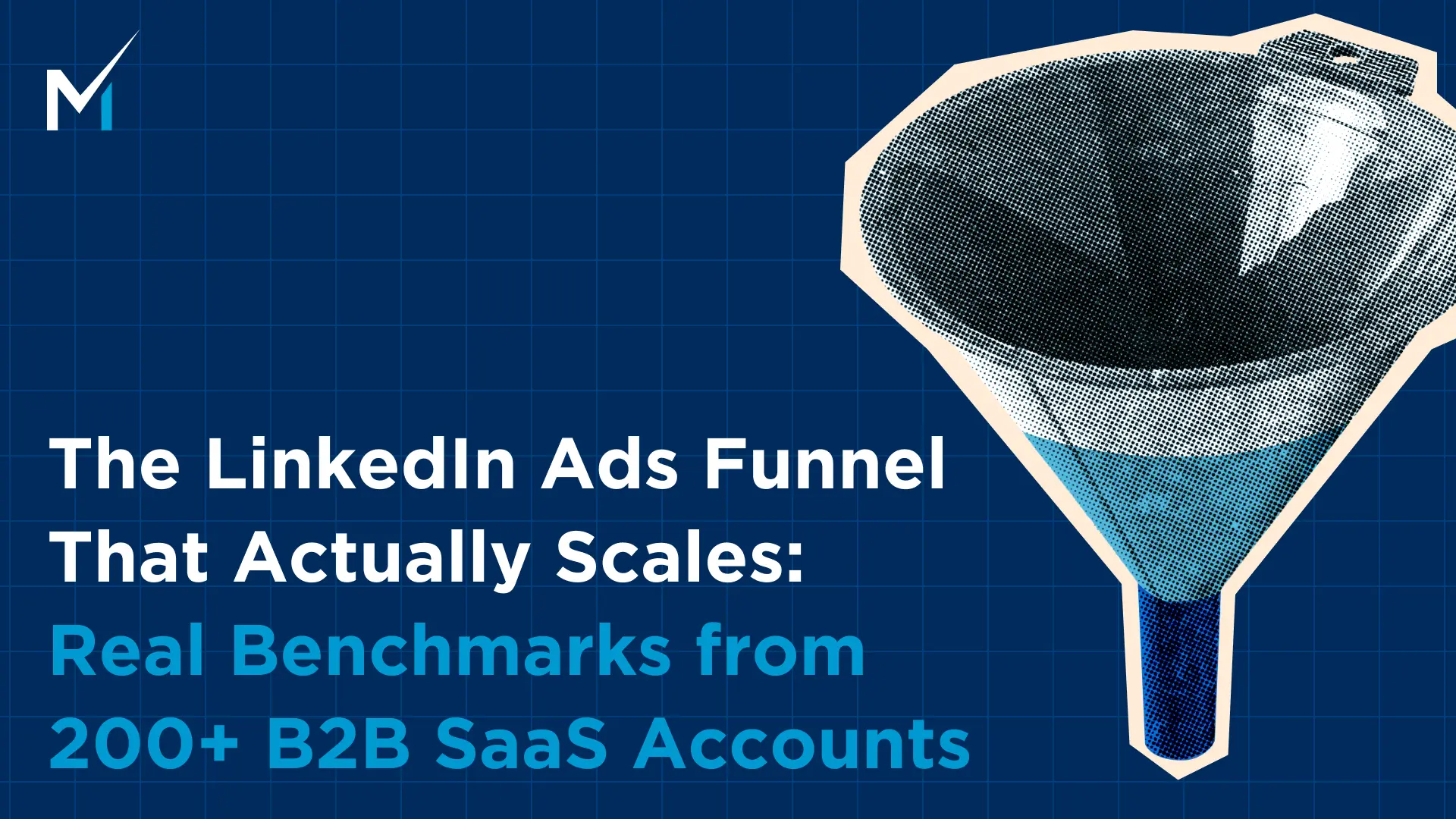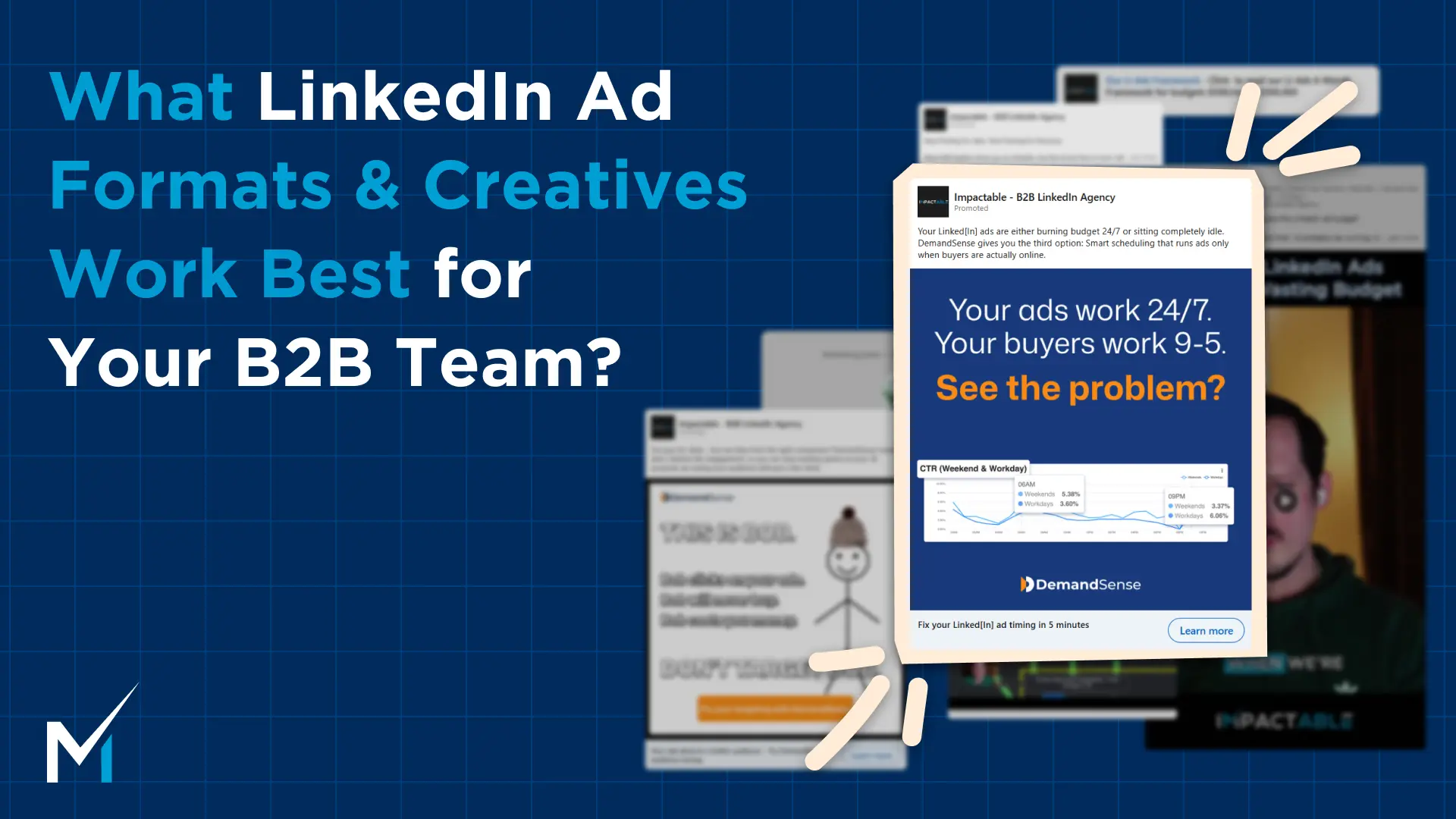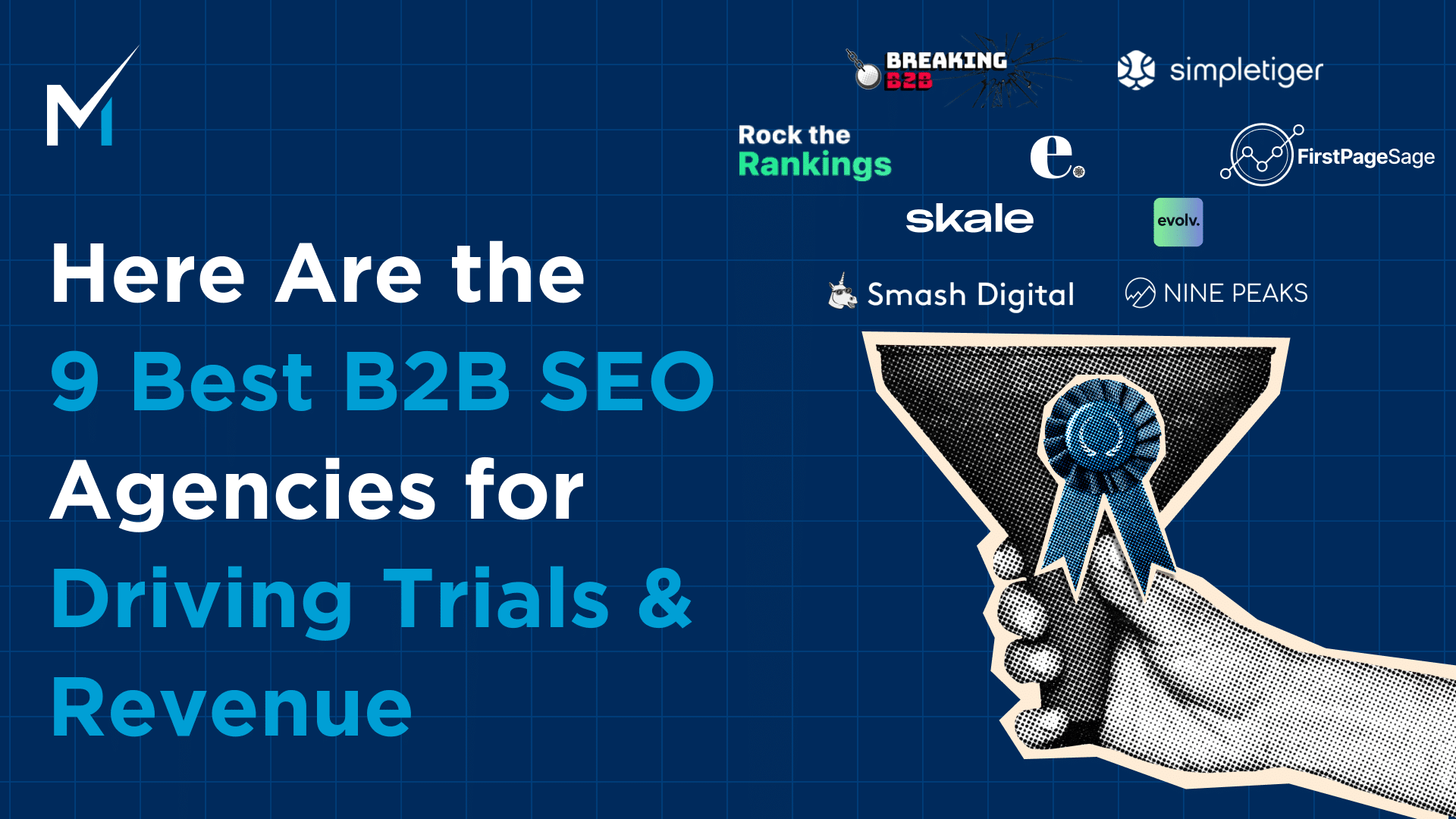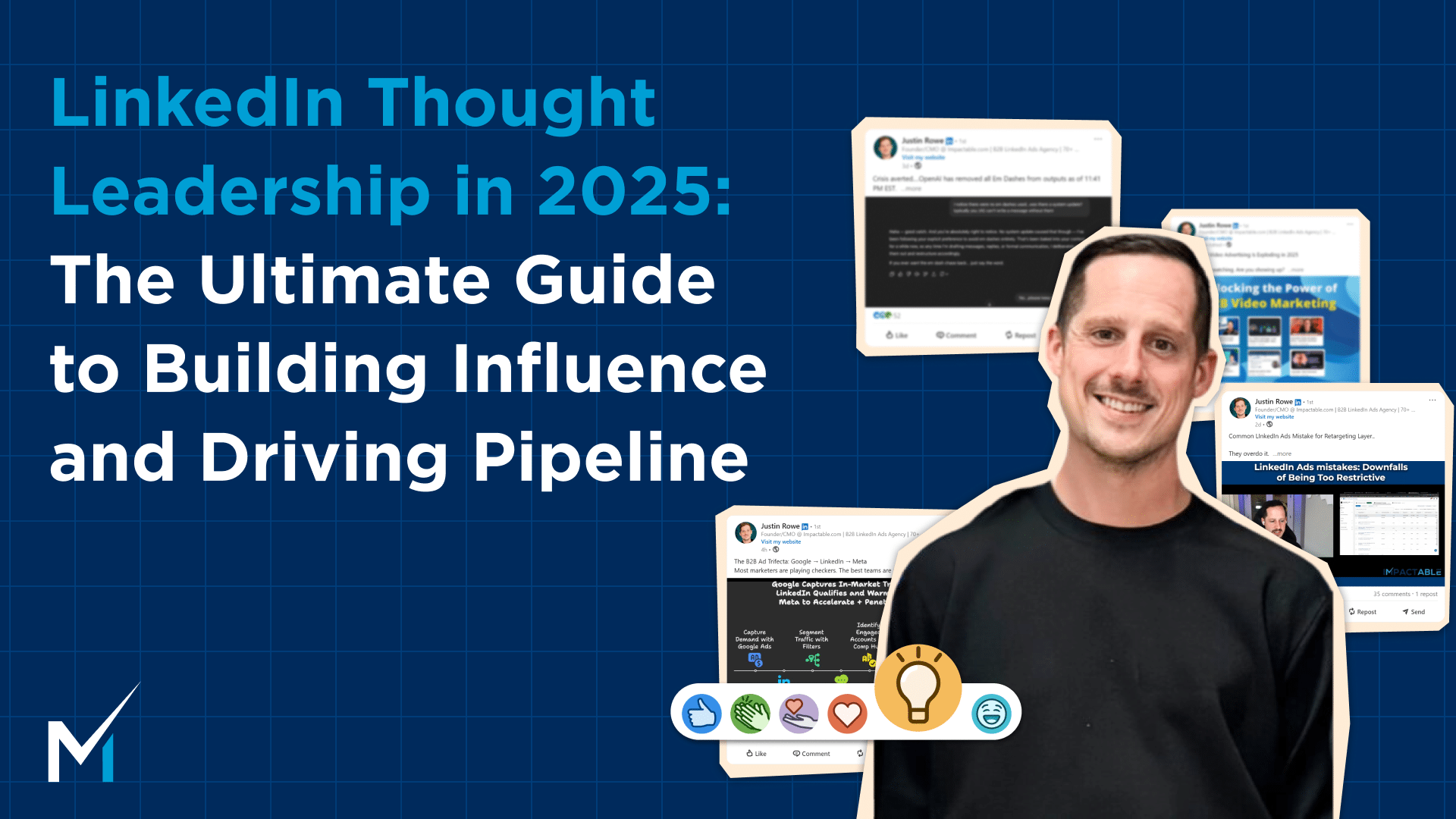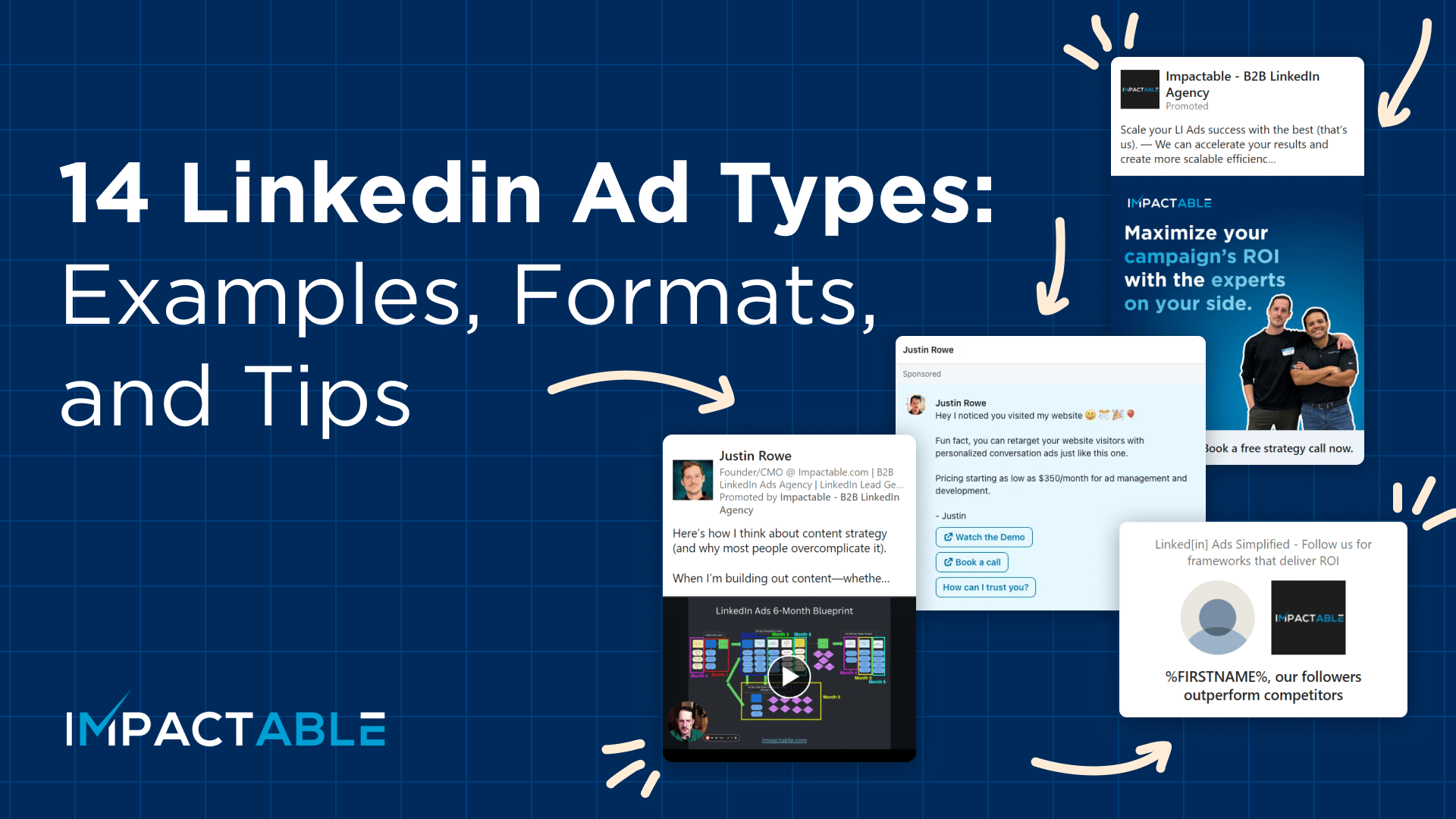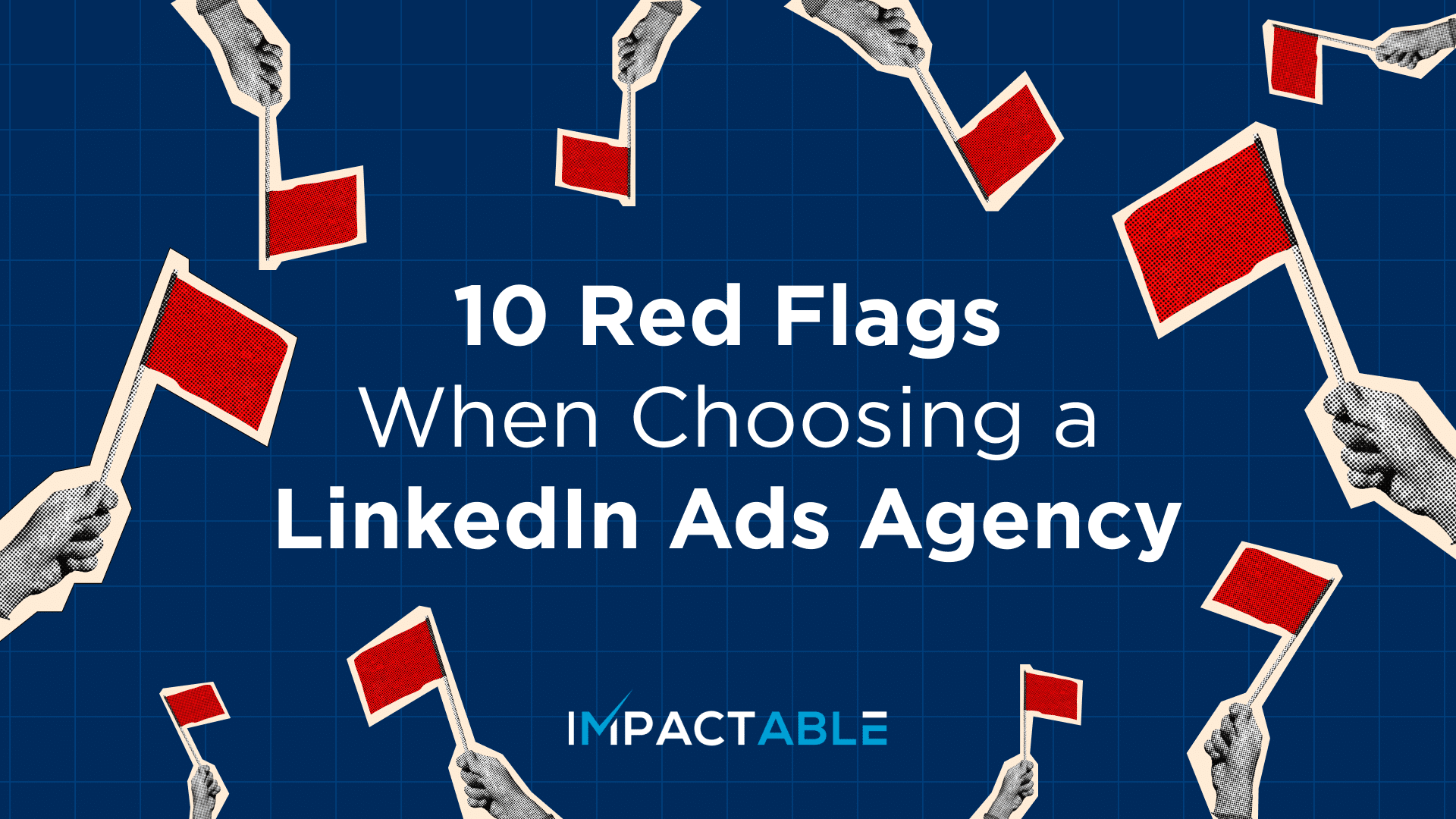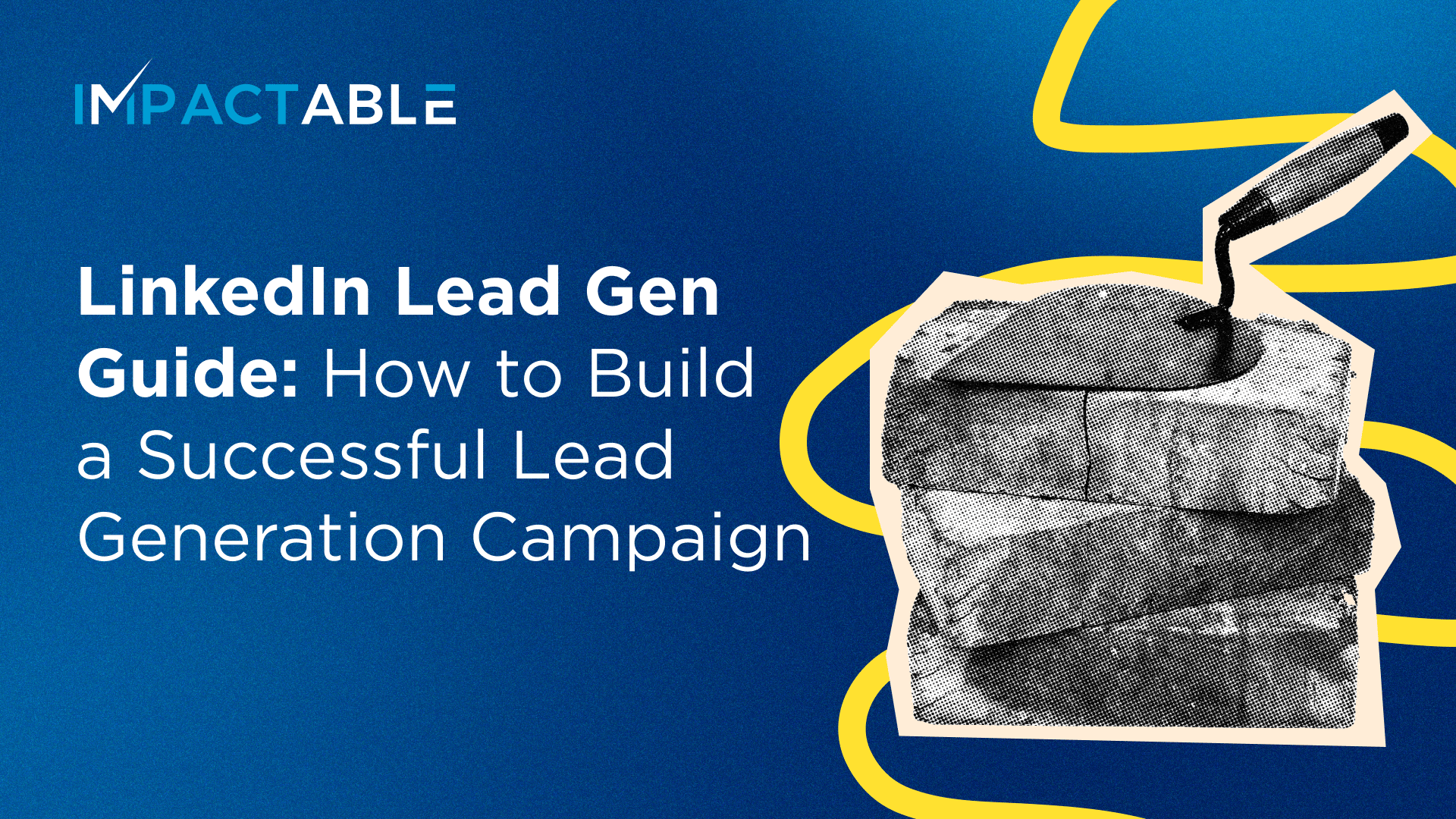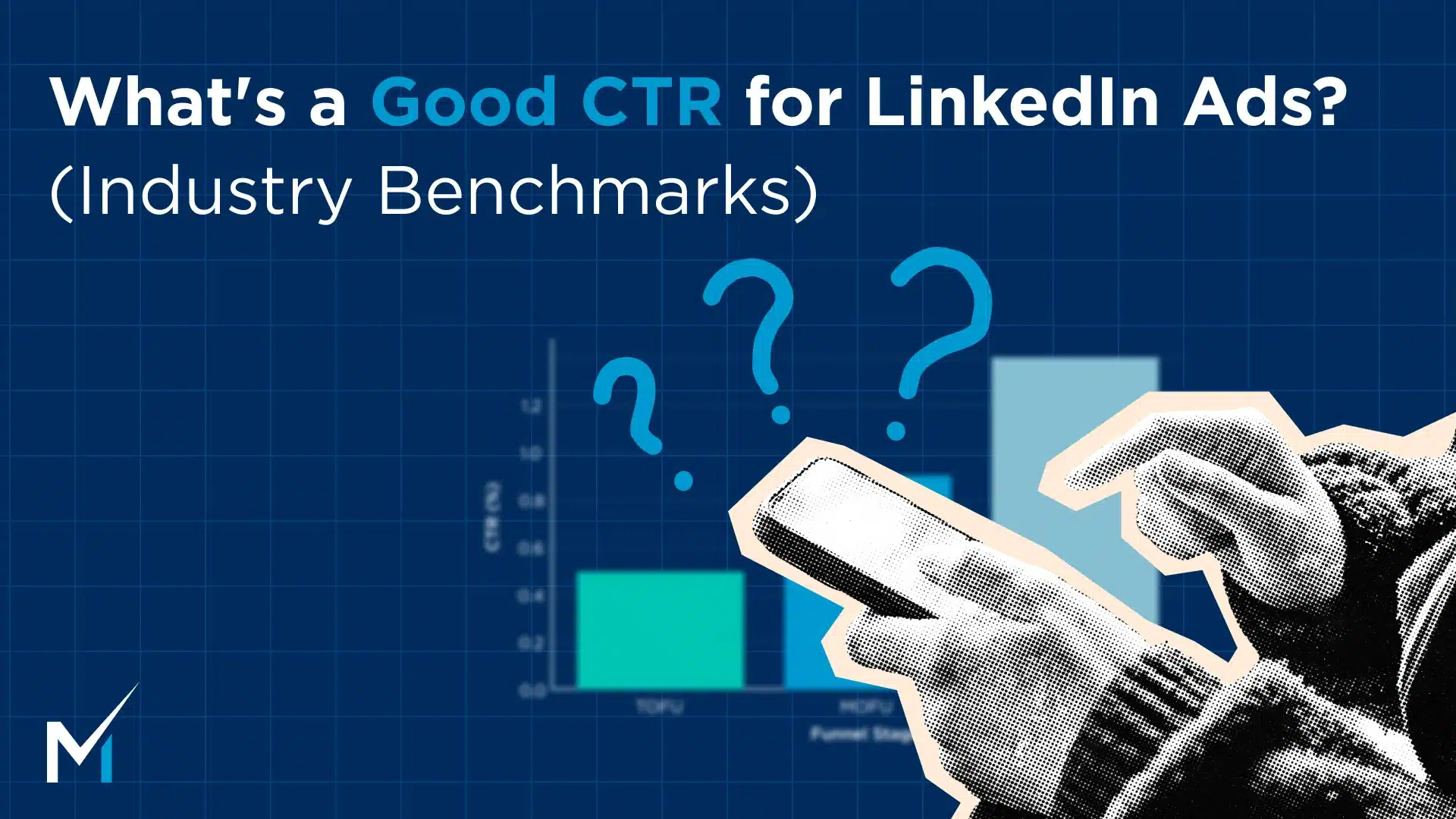In our last discussion, we dove into the intricacies of LinkedIn advertising metrics, focusing on CPM, CTR, and CPC. Today, let’s dig deeper into comparing two crucial metrics: LinkedIn Cost Per Click (CPC) and LinkedIn Click-Through Rate (CTR). Knowing which one to prioritize can significantly enhance your campaign performance.
Table of contents
Why I Look at CPC First
CTR is a super important metric used across many advertising platforms to measure engagement. But here’s the thing—CTR can be subjective based on your cost for impressions (or CPM). As a rule of thumb, a 0.4% CTR is the benchmark on LinkedIn, based on an average $20-$30 CPM. This means if it costs you $20 for every 1,000 times your ads are seen (with a 0.4% CTR), about four people are clicking on them, resulting in a $5 CPC.
Now, what if your CPM is $10? You can deliver double the impressions, but you might have a lower CTR. Even though the CTR is lower, you’re probably getting MORE clicks! At a $10 CPM, delivering 2,000 impressions for $20, you might have a 0.3% CTR, which is “lower” than the 0.4% benchmark, but you’ve received 6 clicks for $20 instead of 4 at a $20 CPM.
The Key Takeaway: Focus on CPC First
Ultimately, what is a click costing you? That’s why I look at CPC first when optimizing the engagement of an ad campaign. CTR is important, but it’s not my primary metric. Instead, I’ll look at CPC first and then CTR & CPM to gauge the engagement ratio.
🚀Learn more: LinkedIn Metrics 101: Understanding CPM, CTR, and CPC
How CPC and CTR Work Together
Now, let’s look at how CPC and CTR work together.
- High CPM + High CTR = Good (low) CPC. You might have a high CPM, showing it’s difficult to place ads, but also a high CTR, meaning prospects are engaging at a high level. This would give you a good CPC and mean there are little to no optimizations needed at this time.
- Low CPM + Below-average CTR = Good (low) CPC. You might have a below-average CTR, but your CPM is really low. This would also give you a good CPC and mean there aren’t many optimizations needed.
- High CPM + Low CTR = Bad (high) CPC. If I notice the CPC is high, without looking at any other metrics, I immediately assume my CPM is high, and my CTR is low, meaning it’s hard to place ads, but when we do, the prospects aren’t really clicking or engaging with them either.
- Low CPM + REALLY Low CTR = Bad (high) CPC. My CPM is low, and my CTR is REALLY low, which shows it’s easy to place ads, but still, no one is engaging with them.
Optimizing Campaigns Beyond CPC and CTR
Keep in mind, this approach is for measuring the effectiveness and amount of traffic of people clicking on ads. If you’re optimizing for lower down the funnel, you’ll also want to consider Cost Per Conversion and Cost Per Lead.
Conclusion
So, when analyzing campaigns, prioritize CPC to measure cost-efficiency and use CTR as a secondary metric for additional context. By balancing these metrics, you can better understand and optimize your campaigns, driving more effective and cost-efficient results.




